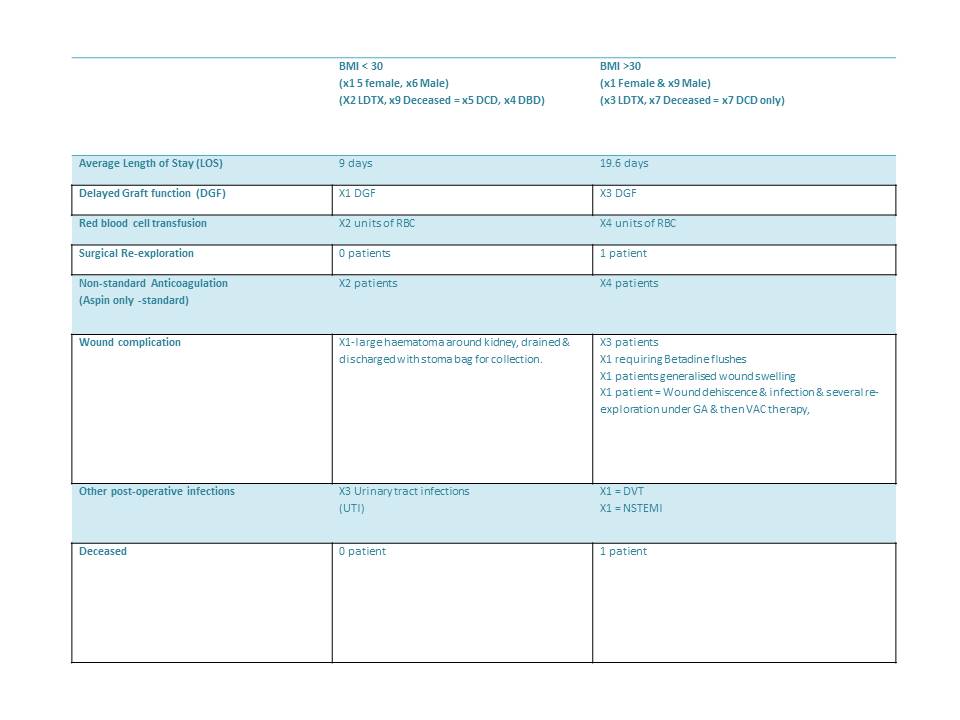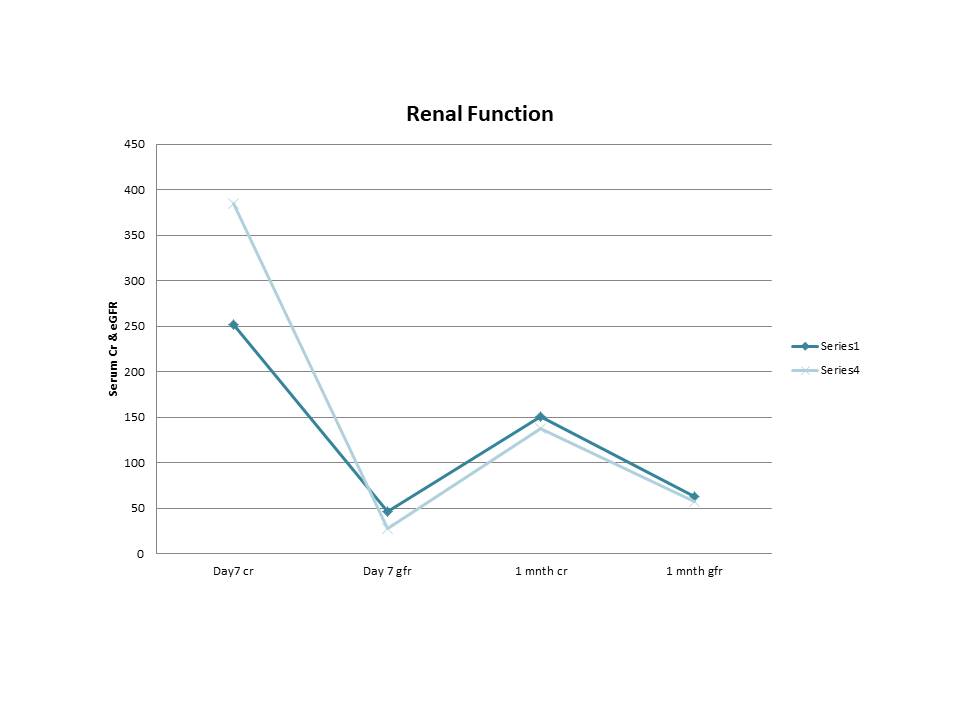A single-centre retrospective study analysing centre-specific renal transplant recipient guidelines in patients with a body mass index 30 or greater: A comparison of post-transplant outcomes
Charlotte Crotty1, John Black1, Rosemary Elwell1, Mohamed Morsy1, Tahir Doughman1, Anna Rizzello1, Atul Bagul1.
1Renal Transplantation & Vascular Access Surgery , Glenfield Hospital, University Hospitals of Leicester, Leicestershire, United Kingdom
Introduction: The assessment of a patient’s suitability for renal transplant is complex and multifactorial. Centre-specific guidelines are therefore adhered too. The Leicester transplant unit (UK) increased the renal transplant assessment guidelines for a recipient’s BMI from 35 or below up to and including 37. Increased surgical risks associated should be considered during consent and accepting enhanced operative risks should the recipient wish to proceed. UK anaesthetic guidelines suggest a BMI is 20-25 is ideal. BMI >30 is considered obese. Patients with end stage renal failure have more concomitant diseases that are already associated with being obese.
Methods: This pilot study analysed the impact of increased bodyweight with postoperative morbidity and mortality of transplant recipients, since increasing the standard operating procedure (SOP) guidelines for both deceased donor and live donor pathways. The initial analysis of postoperative complications in patients receiving a renal transplant included data from a randomised sample of 21 recipients analysed out of 40 patients between August 2022 and December 2022. The inclusion criteria were all initial inpatient stays for renal transplant surgery under general anaesthetic. All of the recipients have all been subjected to the same medical and surgical transplant assessment by a nephrologist and transplanting surgeon prior to listing for organ transplant. Data collection involved patient notes and electronic patient records. The BMI calculation (BMI; kg/m2) was used according to the recommendation of the World Health Organisation (WHO).
Results: 11 patients had a BMI of <30 and 10 patients of >30. The average age range of the recipients whose BMI was > 30 was 45.7 years, and 44.2 years for <30 BMI patients. Of these patient groups both live donor and deceased donor transplants were included: BMI = > 30: x 3 were live donor recipients and x 7 deceased donor transplants. BMI = < 30: x2 were live donor recipients and x9 were deceased donor transplant recipients. Unfortunately one patient in the obese category deceased four months post-transplant following prolonged admission for transient ischemic attack (TIA) and cerebral vascular accident (CVA), although this was not the initial inpatient stay. Other salient outcomes are below:


Conclusion: Obesity limits in renal transplant recipients remains varied amongst UK transplant centres. This analysis has highlighted some of the multifaceted impacts on the patient and the service. The most significant findings is an almost double length of stay compared with a recipient with a BMI <30. Wound complications and post-operative complications are comparable. Although there are increased associated risks with obese transplant recipients, the impact is modest. However a larger cohort study will be implemented to evaluate this conclusion and determine if there should be a BMI limit.
[1] Renal Transplant
[2] Obesity
[3] High BMI
[4] Protocols
[5] Outcomes
